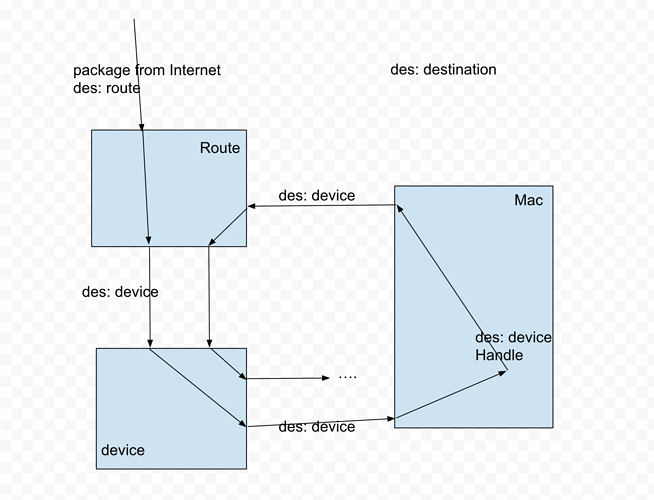I have another device which can access the WAN port and I ran some tests with it.
I created a PHP web server on my Mac(a device, not the Mac Mini), and I use the tools named "tcpdump" to catch the packages on the port of 1233 on it. The logs looks quite normal, and there is no logs on the PHP web server.
xiaolin@XiaoLins-Mac:~|⇒ sudo tcpdump port 1233 -i en0 -vv
tcpdump: listening on en0, link-type EN10MB (Ethernet), capture size 262144 bytes
08:33:28.972170 IP (tos 0x0, ttl 63, id 56595, offset 0, flags [DF], proto TCP (6), length 60)
10.1.0.1.40158 > xiaolins-mac.home.univ-appserver: Flags [S], cksum 0xde7f (correct), seq 1709956178, win 29200, options [mss 1460,sackOK,TS val 2460314733 ecr 0,nop,wscale 7], length 0
08:33:28.972233 IP (tos 0x0, ttl 64, id 0, offset 0, flags [DF], proto TCP (6), length 64, bad cksum 0 (->2649)!)
xiaolins-mac.home.univ-appserver > 10.1.0.1.40158: Flags [S.], cksum 0x14a2 (incorrect -> 0x05e4), seq 1241448826, ack 1709956179, win 65535, options [mss 1460,nop,wscale 5,nop,nop,TS val 156230863 ecr 2460314733,sackOK,eol], length 0
08:33:28.972531 IP (tos 0x0, ttl 254, id 55301, offset 0, flags [none], proto TCP (6), length 40)
10.1.0.1.40158 > xiaolins-mac.home.univ-appserver: Flags [R.], cksum 0x6b78 (correct), seq 1, ack 1, win 128, length 0
08:33:29.995839 IP (tos 0x0, ttl 63, id 56596, offset 0, flags [DF], proto TCP (6), length 60)
10.1.0.1.40158 > xiaolins-mac.home.univ-appserver: Flags [S], cksum 0xda7f (correct), seq 1709956178, win 29200, options [mss 1460,sackOK,TS val 2460315757 ecr 0,nop,wscale 7], length 0
08:33:29.995907 IP (tos 0x0, ttl 64, id 0, offset 0, flags [DF], proto TCP (6), length 64, bad cksum 0 (->2649)!)
xiaolins-mac.home.univ-appserver > 10.1.0.1.40158: Flags [S.], cksum 0x14a2 (incorrect -> 0x9f35), seq 3265390521, ack 1709956179, win 65535, options [mss 1460,nop,wscale 5,nop,nop,TS val 156231835 ecr 2460315757,sackOK,eol], length 0
08:33:29.996214 IP (tos 0x0, ttl 254, id 55499, offset 0, flags [none], proto TCP (6), length 40)
10.1.0.1.40158 > xiaolins-mac.home.univ-appserver: Flags [R.], cksum 0x0c96 (correct), seq 1, ack 1, win 128, length 0
-
xiaolins-mac.home is the device in the LAN and 10.1.0.1 is another device in the WAN
On my Mac Mini, I can only find some connection refuesd error like below, which I can recurrent easily by curl 10.1.0.1:40158
2020-02-19 07:39:35.498656 <WARNING> [SGDirectConnector-288112] Connection setup failed with error: Connection refused, 10.1.0.1:44881
2020-02-19 07:39:35.501704 <WARNING> [SGDirectConnector-288113] Connection setup failed with error: Connection refused, 10.1.0.1:44881
2020-02-19 07:39:36.273433 <WARNING> [SGDirectConnector-288114] Connection setup failed with error: Connection refused, 10.1.0.1:44881
2020-02-19 07:39:36.277306 <WARNING> [SGDirectConnector-288115] Connection setup failed with error: Connection refused, 10.1.0.1:40158
2020-02-19 07:39:36.280694 <WARNING> [SGDirectConnector-288116] Connection setup failed with error: Connection refused, 10.1.0.1:40158
2020-02-19 07:43:14.979012 <WARNING> [SGDirectConnector-288158] Connection setup failed with error: Connection refused, 10.1.0.1:40158


